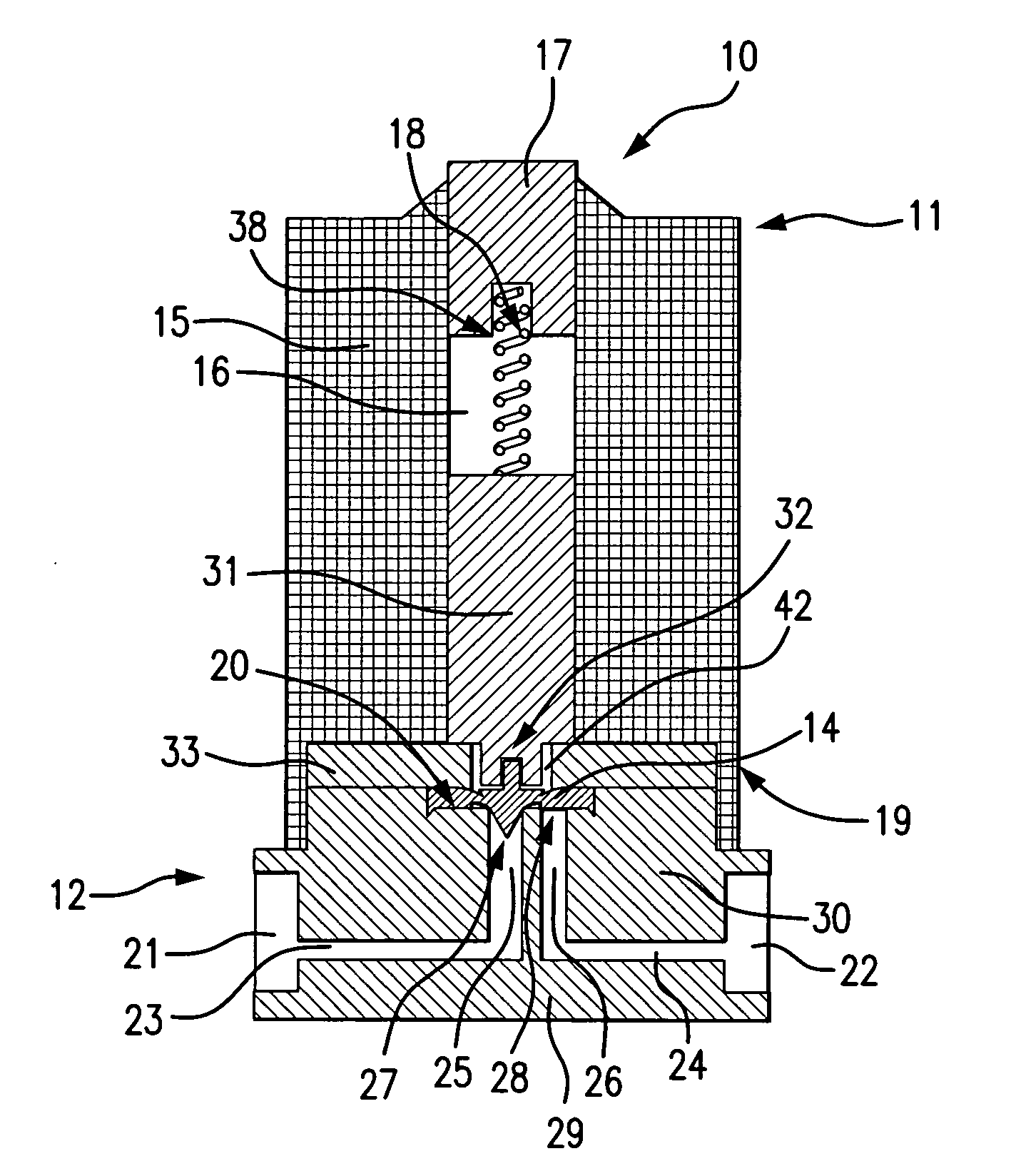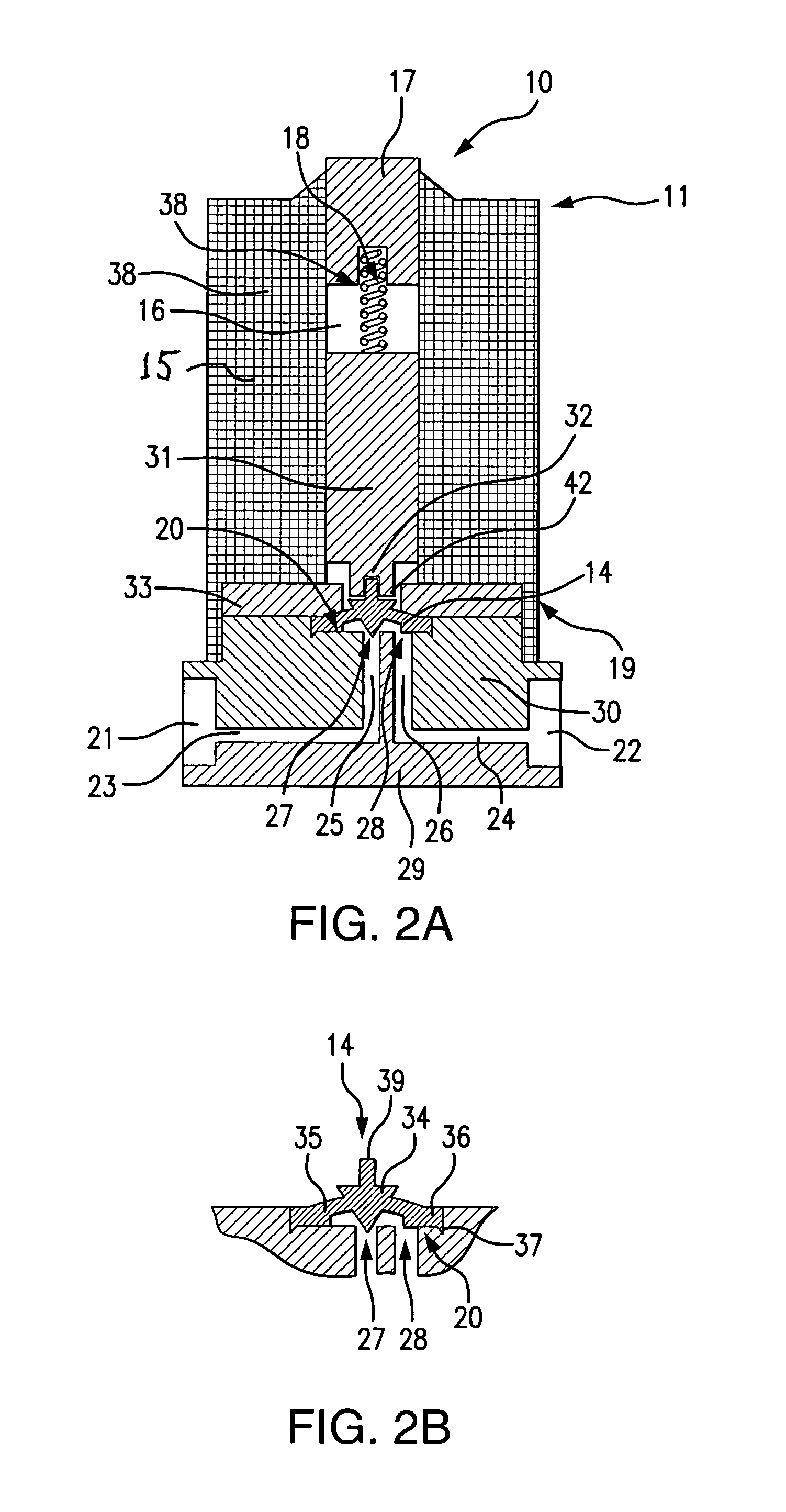Solenoid-actuated diaphragm valve
a diaphragm valve, solenoid technology, applied in the direction of valve details, valve arrangement, valve operating means/releasing devices, etc., can solve the problems of unbalanced fluid pressure above the diaphragm, pressure on the diaphragm against the valve seat, and diaphragms that are detached, etc., to achieve high fluid pressure, promote fluid flow, and relieve pressure
- Summary
- Abstract
- Description
- Claims
- Application Information
AI Technical Summary
Benefits of technology
Problems solved by technology
Method used
Image
Examples
Embodiment Construction
[0049]In the following detailed description of the preferred embodiment, it should be understood that the novel features of the present invention relate to the plunger, the constraining plate and the diaphragm, and that the other features described herein are merely typical features of a generic solenoid-actuated diaphragm valve. Therefore, the configuration of the various elements of the valve other than the plunger, the constraining plate and the diaphragm are for illustrative and exemplary purposes only, and are not intended to limit the scope of the present invention. Thus, for example, while a specific configuration of the valve body and valve seat is described herein, this configuration can be varied to according to the desired flow pattern of the valve without impairing the utility or applicability of the present invention.
[0050]As used in the following description, the term “proximal” refers to the part of an element oriented toward the base of the valve, while the term “dis...
PUM
 Login to View More
Login to View More Abstract
Description
Claims
Application Information
 Login to View More
Login to View More - R&D
- Intellectual Property
- Life Sciences
- Materials
- Tech Scout
- Unparalleled Data Quality
- Higher Quality Content
- 60% Fewer Hallucinations
Browse by: Latest US Patents, China's latest patents, Technical Efficacy Thesaurus, Application Domain, Technology Topic, Popular Technical Reports.
© 2025 PatSnap. All rights reserved.Legal|Privacy policy|Modern Slavery Act Transparency Statement|Sitemap|About US| Contact US: help@patsnap.com



